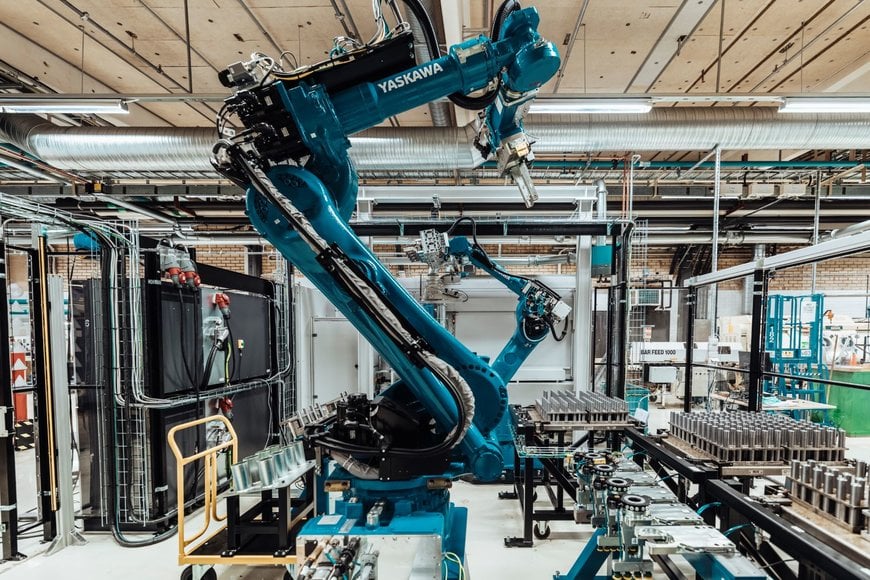www.industryemea.com
19
'21
Written on Modified on
To adopt Industry 4.0, we must look to the Lighthouses
Lighthouses have been the key to maritime navigation for centuries, emitting light to guide sailors across treacherous seas.

Recognised by the World Economic Forum (WEF), Lighthouse facilities can also act as a guiding light for the manufacturing industry, as it navigates the technologies of Industry 4.0. But what makes a Lighthouse factory, and what can other manufacturers learn from them? Here, Dieter Heimerdinger Vice President of Supply, Sandvik Coromant at high-tech engineering group Sandvik, explains.
A study by WEF in 2018 found that over 70 per cent of businesses are investing in technologies such as big data analytics, artificial intelligence and 3D printing, but are not able to take these projects beyond the pilot phase. But it seems that tides have changed. 2020 has been a difficult year for many manufacturers to navigate, but its impact on digitalisation is clear. In May 2020, a Fortune survey found that 77 per cent chief executive officers believe the crisis will force their companies to speed up their digital transformations. But how can they get it right?
Overcoming hurdles
Certainly before 2020, the manufacturing industry was sometimes slow to adopt digital technologies. Industrial Internet of Things (IIoT) solutions have been implemented at a sluggish pace, and are yet to scale across industry. It’s been typical for manufacturers across many sectors to rely on legacy systems to collect and analyse data, preventing them from realising the main benefits of digitalisation: data-driven insights to run equipment more efficiently, to react automatically and to boost operational speed.
There are many reasons why digital progression has been stalled. Stagnation may come from a lack of skills in the workplace, with new technologies requiring a different set of competences.
The investment in reskilling, training and hiring new specialists can leave many manufacturers questioning whether digital transformation is really worth it. But it is. Having 70 per cent of manufacturers struggling to get new projects off the ground teaches us is that — while many want to implement digital technologies — it’s difficult to find ways to prove their continuous benefits. It’s those manufacturers that are in need of a guiding light.
A beacon of hope
To date, the WEF has identified 69 facilities across the globe as “Lighthouse Facilities”. The network has been selected from a survey of over 1,000 manufacturing sites, based on their success in adopting Industry 4.0 technologies. They represent a range of industries, such as automotive, additive manufacturing and consumer goods.
Described by WEF as “the world’s most advanced factories, which are leading the way in the adoption of Fourth Industrial Revolution technologies”, the recognition demonstrates a clear motive. For WEF, showcasing the 69 facilities as Lighthouses means they can show the way for the 70 per cent of companies stuck in “pilot purgatory”.
Just like maritime lighthouses shine light on danger at sea, Lighthouse facilities are here to dispel the myths that make digitalisation seem hazardous. Contrary to concerns about skills gaps, the Lighthouse factories are not deploying IIoT technology to replace operators.
A McKinsey report suggests that less than five per cent of occupations consist of activities that are completely automatable, while over 60 per cent of occupations have at least one third of automatable tasks. Consequently, employees in production enjoy a working routine that’s less repetitive, and more interesting, diversified, and productive.
An evaluation of the facilities has uncovered several other findings that demonstrate the value of implementing Industry 4.0. The facilities are more agile and showcase greater customer centricity across end-to-end manufacturing, and are quicker to recognise shifts in customer preferences.
Increased automation and upskilling and reskilling efforts also means these facilities operate at speed, giving them a greater advantage over competitors. This speed and efficiency is also leveraged to make processes more eco-efficient, reducing waste and using fewer finite resources.
Gimo: factory of the future
In 2019, Sandvik Coromant’s production facility in Gimo, Sweden was awarded Lighthouse facility status. At the factory, Sandvik Coromant manufactures machine tools and metal cutting inserts, which customers use to produce anything from small machining parts to aircraft engines. Activities are divided into two plants, one for the inserts and one for the tool systems. Both of these are the biggest production plants in the world in their respective fields with a total surface area of 110,000 square metres. Running through the factory is a digital thread that unites production activities with data driven insights.
One area of production praised by WEF is Gimo’s ‘touchless changeovers’, which allow tool design patterns to be changed automatically, even during unmanned shifts. Historically, design patterns in production cells had to be changed manually, with operators from the day shifts preparing machines to run through the night. This took time and resources, and limited flexibility during unmanned shifts.
Seeking an alternative, Gimo invested in smart automation with ultra-flexible robots, machines, tools and fixtures, which together perform complex, touchless changeovers without the need for any human oversight.
This is just one example where digitalisation boosts productivity and takes the strain of performing monotonous tasks away from human workers. Digital technologies are also used to deliver improvements in other areas at Gimo, such as maintenance. Increasingly, sensors are being fitted to plant equipment, collecting data for a growing list of parameters such as pressure, temperature, vibration and acoustics. This data, combined with sophisticated analytics, can reveal patterns and problems before downtime occurs.
Businesses looking to invest in digital technologies should look to the Lighthouses for guidance. Their agility and resilience set them apart before the pandemic, and are part of a strong foundation to withstand the changes it has brought forth. With more businesses recognising the need to go digital, but perhaps not knowing how to sustain the benefits, having 69 guiding lights is key to industry’s future.
www.sandvik.com

